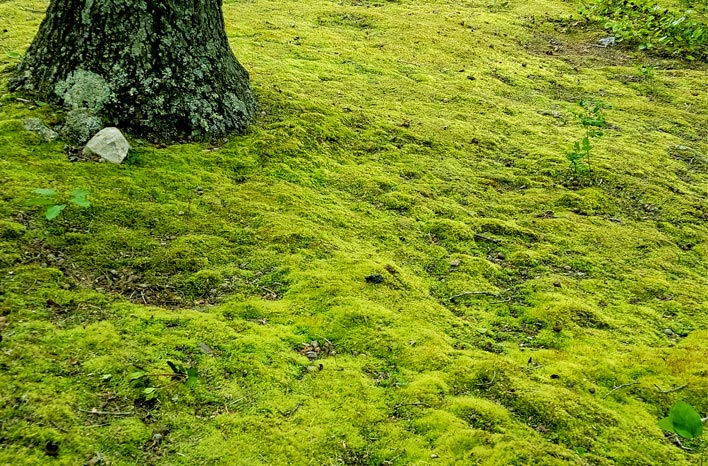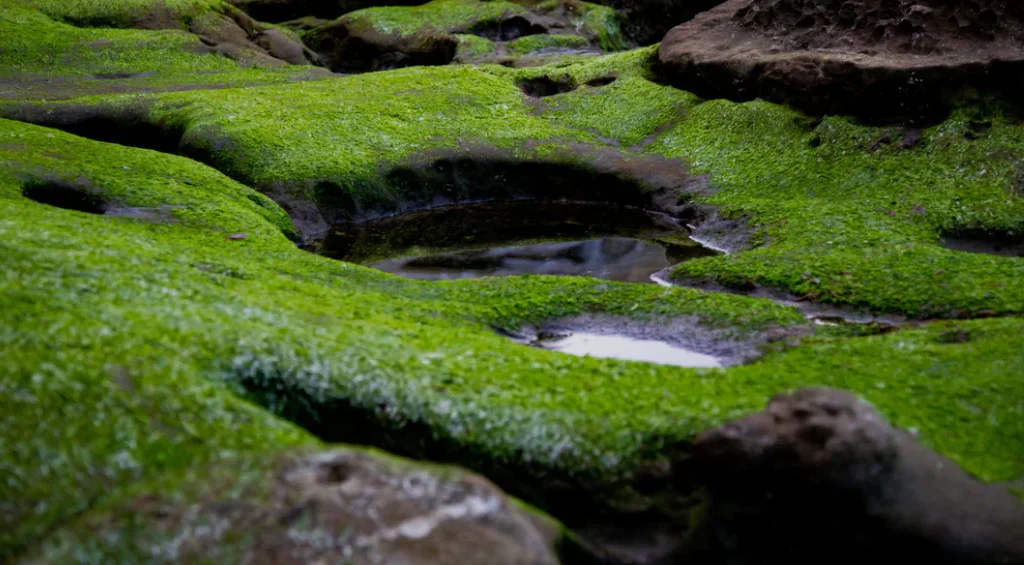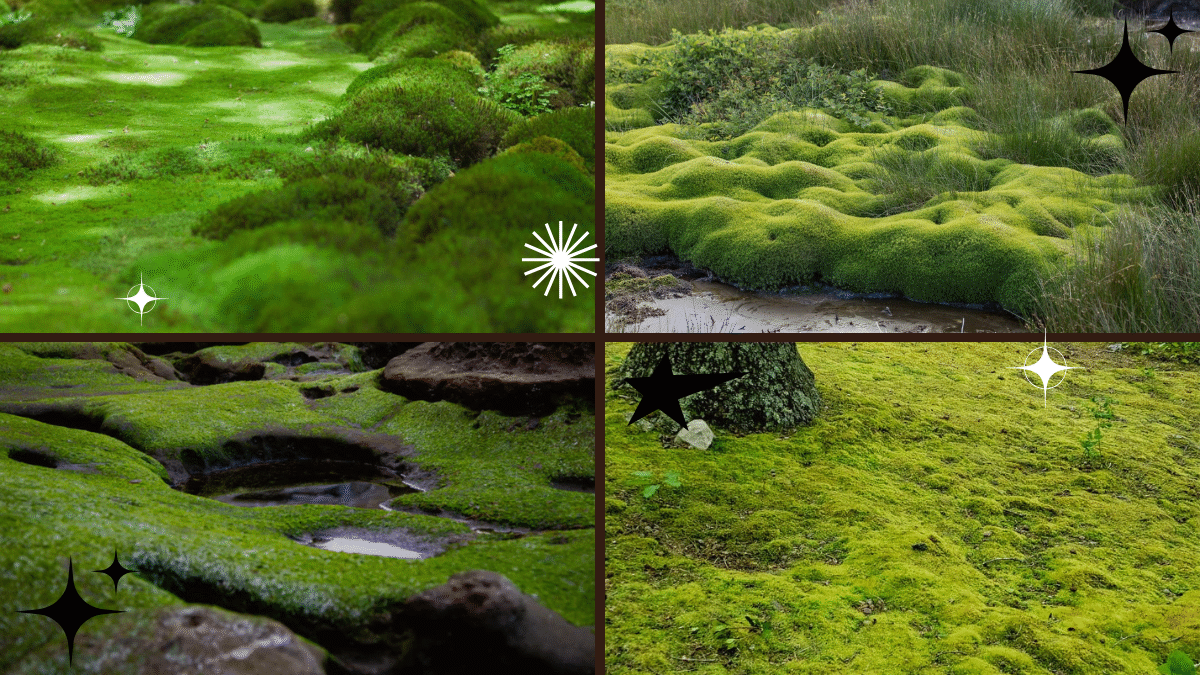When you think of tranquil, enchanting gardens, one plant quietly working its magic is moss. Soft, velvety, and vibrantly green, moss transforms ordinary spaces into serene retreats. Whether you want to create a peaceful shade garden, a carpet-like ground cover, or a Japanese-inspired landscape, moss adds texture and a timeless natural beauty to any outdoor space.
Best of all — moss is hardy, low-maintenance, and eco-friendly. If you’ve been curious about incorporating moss into your garden, this guide will show you exactly how to plant and maintain moss for a lush, inviting landscape.

Why Choose Moss for Your Garden?
Moss offers both aesthetic and practical advantages:
- Evergreen year-round: Stays green through all seasons.
- Low maintenance: Requires no mowing, fertilizing, or chemical treatments.
- Thrives in shade: Perfect for areas where grass struggles.
- Prevents soil erosion: Ideal for slopes and damp areas.
- Creates tranquil spaces: Common in Zen gardens and shaded retreats.
Moss is perfect for modern, rustic, or classic garden designs — from stepping stone pathways to shady nooks and decorative rock gardens.

Types of Moss for Gardens
There are several varieties to consider, depending on your landscape and climate:
Sheet Moss (Hypnum)
- Forms soft, carpet-like layers.
- Great for ground cover and shady areas.
Cushion Moss (Leucobryum glaucum)
- Grows in mounded, pillow-like shapes.
- Beautiful for rock gardens and accents.
Haircap Moss (Polytrichum)
- Upright, spiky texture.
- Ideal for woodland gardens and moist areas.
Fern Moss (Thuidium)
- Feathery, fern-like appearance.
- Spreads quickly and thrives in shade.

Where and When to Plant Moss
Moss thrives in moist, shaded areas, although some varieties tolerate sun if humidity remains high.
Best Time to Plant
- Spring and fall are ideal, when temperatures are moderate and moisture is more consistent.
- Avoid planting in the heat of summer or during droughts.
Ideal Planting Conditions
- Shade or partial shade: Under trees, near walls, or alongside paths.
- Moist, acidic soil: pH between 5.0 and 5.5 is best.
- Compact soil: Moss prefers firm, clay-like or compacted soil without loose texture.

How to Plant Moss: Step-by-Step Guide
Whether you’re transplanting live moss or growing it from a slurry, these steps will ensure successful establishment.
Materials You’ll Need:
- Moss sheets or clumps (purchased or foraged ethically)
- Garden rake or hoe
- Spray bottle or hose with mist setting
- Water
- Optional: Buttermilk or yogurt (for slurry method)
Planting Moss Sheets or Clumps
1. Prepare the Area
- Remove leaves, weeds, grass, and debris.
- Lightly rake or tamp down the soil for a firm, even surface.
2. Test Soil pH
- Use a pH testing kit.
- If necessary, acidify the soil using sulfur or organic compost.
3. Place the Moss
- Press moss sheets or clumps firmly onto the soil.
- For clumps, arrange pieces tightly together for even coverage.
4. Water Immediately
- Mist the moss thoroughly, ensuring it makes good contact with the soil.
5. Keep Moist
- Mist daily for the first 2-3 weeks until moss establishes and roots into the soil.
Planting Moss with a Slurry Method
Ideal for vertical surfaces, rocks, or difficult spots.
1. Blend Moss Fragments
- Combine 2 cups of moss pieces with 2 cups of buttermilk (or yogurt) and a cup of water in a blender.
- Blend into a paint-like slurry.
2. Apply the Slurry
- Paint or pour the mixture onto soil, rocks, or wood surfaces.
- Keep the area moist, misting daily until moss starts growing.
How to Maintain Moss in Your Garden
Once established, moss requires very little attention. Here’s how to keep it lush and healthy:
Watering
- Keep moss consistently moist, especially in dry periods.
- Use a mist setting or spray bottle to avoid dislodging moss.
- In shady, humid environments, natural rainfall may suffice.
Clearing Debris
- Gently remove fallen leaves, twigs, and debris regularly.
- Use a soft broom or hand to avoid disturbing the moss.
Trimming
- Trim overgrown or uneven patches with garden scissors.
- This promotes a uniform, dense appearance.
Sunlight Management
- If moss starts browning due to excess sunlight, create shade using nearby plants, garden screens, or shade cloth.
Common Moss Problems and Solutions
| Issue | Cause | Solution |
|---|---|---|
| Yellowing or browning patches | Too much sun, lack of moisture | Increase watering, provide partial shade |
| Loose or lifting patches | Inadequate contact with soil | Press firmly and mist frequently until rooted |
| Invasion by weeds or grass | Competition for space/nutrients | Regularly clear weeds, maintain acidic soil |
| Mold or algae on moss | Poor air circulation, excess moisture | Thin out dense patches, improve drainage |
Benefits of Moss in Garden Landscapes
Still wondering why you should choose moss over grass or other ground covers? Here’s what makes moss a standout:
- Eco-friendly: No fertilizers, pesticides, or mowing required.
- Supports biodiversity: Provides habitat for insects and small wildlife.
- Retains moisture: Keeps soil cool and reduces water evaporation.
- Reduces erosion: Ideal for shady, sloped, or wet areas.
- Aesthetic appeal: Adds ancient, mystical charm to any setting.
Frequently Asked Questions
Q: Can moss grow in sunny areas?
Some varieties, like Haircap Moss, tolerate dappled sunlight if kept moist. However, most moss thrives in shade.
Q: Does moss need soil to grow?
No — moss can grow on soil, wood, rocks, and even concrete if moisture and shade are adequate.
Q: How fast does moss spread?
Moss grows slowly at first but accelerates once established. Regular misting and care can speed up growth.
Q: Is moss safe for pets and children?
Yes — moss is non-toxic and safe for pets and kids to walk or play on.
Q: Can I transplant moss from the wild?
It’s best to purchase nursery-grown moss or forage responsibly (with permission) to protect wild habitats.
Final Thoughts
Planting and maintaining moss in your garden is a rewarding, low-maintenance way to create a serene, naturally beautiful outdoor space. Whether you’re covering a shady patch of ground, adding texture between stepping stones, or designing a Zen retreat, moss brings softness, color, and tranquility to your landscape.
By choosing the right variety, ensuring proper planting conditions, and maintaining consistent moisture, you’ll enjoy a vibrant, evergreen moss garden that transforms your space into a soothing, green sanctuary.





Leave A Comment